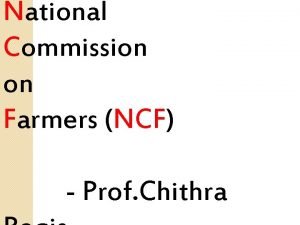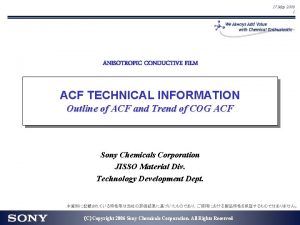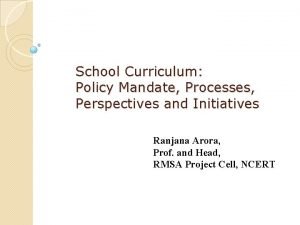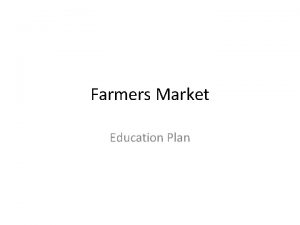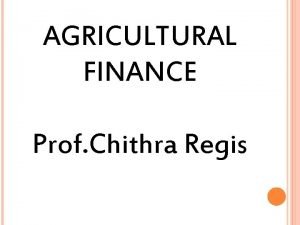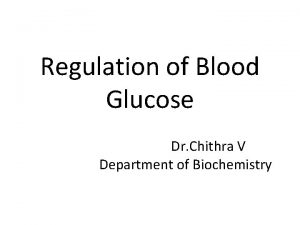National Commission on Farmers NCF Prof Chithra INTRODUCTION














- Slides: 14

National Commission on Farmers (NCF) - Prof. Chithra

INTRODUCTION • UPA government • 2004 • Chairman. M. S. Swaminathan

Farmer includes – • Landless agricultural labourers • Share croppers • Tenants • Small, marginal and sub-marginal cultivators • farmers with larger holdings • Fishermen and women • Diary

• Sheep • Poultry and • Other farmers involved in animal husbandry • Pastoralists • As well as those rural and tribal families engaged in a wide variety of farming related occupation such as • Sericulture, vermiculture, • Production of bio-fertilizers and biopesticides and agro –processing

PROBLEMS FACED BY FARMERS ØNeed to face fury of nature-drought/flood ØInstitutional support is weak ØCost of production is higher than Minimum Support Prices ØDecline in Capital Formation in agriculture and allied activities ØChronic Malnutrition ØFarmers have no crop insurance and health insurance. ØWomen are denied of the benefit of Kissan Credit card system

STRATEGY TO IMPROVE THE ECONOMIC CONDITIONS OF FARMERS: NCF recommended and emphasised the need to increase farm productivity and profitability with ecological harm Need to bridge the gap between potential and actual yield NCF brought out the Agricultural Renewal Action Plan

The Agricultural Renewal Action Plan has FIVE components. They are: 1. Soil Health Mangement 2. Irrigation Water Supply Augmentation and Demand Management 3. Credit and Insurance 4. Technology 5. Market

1. Soil Health Management: Agricultural universities, research institutes, Krishi Vigyan Kendras, fertilizer companies, state department of agriculture and farmers’ associations should aim at increasing the profitability potential of soils Need to pay attention to the chemistry and physics of soils –Micro and macro nutrients – microbiology

2. Irrigation Water Supply Augmentation and Demand Management: -Water is a public resource and a social resource and not a private property. -Privatisation of water distribution could lead to water war in local communities -Existing wells and ponds should be renovated -Demand management thru drip and sprinkle irrigation -Sea water farming should be promoted in coastal areas through cultivation of :

Mangroves

Halophytic plants

3. CREDIT AND INSURANCE: Credit reform is the pathway to enhance small farm productivity and end farmers suicides. High difference between lending rate and deposit rate. 4% of interest for Crop loans –profitability and no distress for farmers Risk of drought and floods-----Agricultural Risk fund

4. Technology: -Need for proper integration of harvest and post-harvest technologies. -lab to land demonstration should be organised. -Eco-boards can be produced from cotton stalks -A cadre of Rural Farm Science Manager

5. MARKETS: Opportunity for assured and remunerative marketing and economic viability --Market reforms should begin with product planning, so every link Cultivation-consumption-commerce receive adequate attention Land use advisory service –informed decisions regarding ecological, meteorological and marketing factors
 Agriculture renewal action plan
Agriculture renewal action plan Introduction of ncf 2005
Introduction of ncf 2005 Ncf 2005 introduction
Ncf 2005 introduction Ncf clearance
Ncf clearance Ncf 2011
Ncf 2011 Anisotropic conductive film
Anisotropic conductive film Ncf 2005
Ncf 2005 Defects of the present curriculum
Defects of the present curriculum Graduated commission
Graduated commission National finance commission
National finance commission Joint commission national patient safety goals 2016
Joint commission national patient safety goals 2016 National finance commission
National finance commission Impact of national knowledge commission
Impact of national knowledge commission Importance of kothari commission
Importance of kothari commission National investment commission of liberia
National investment commission of liberia
